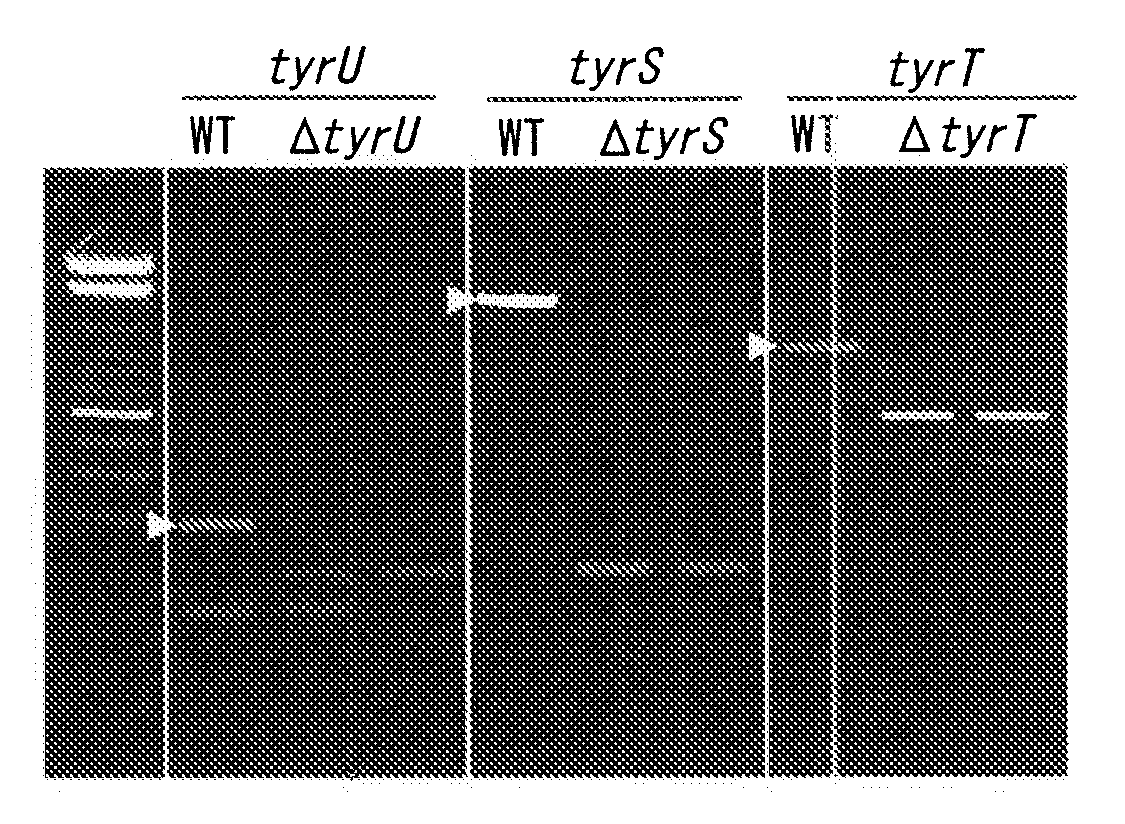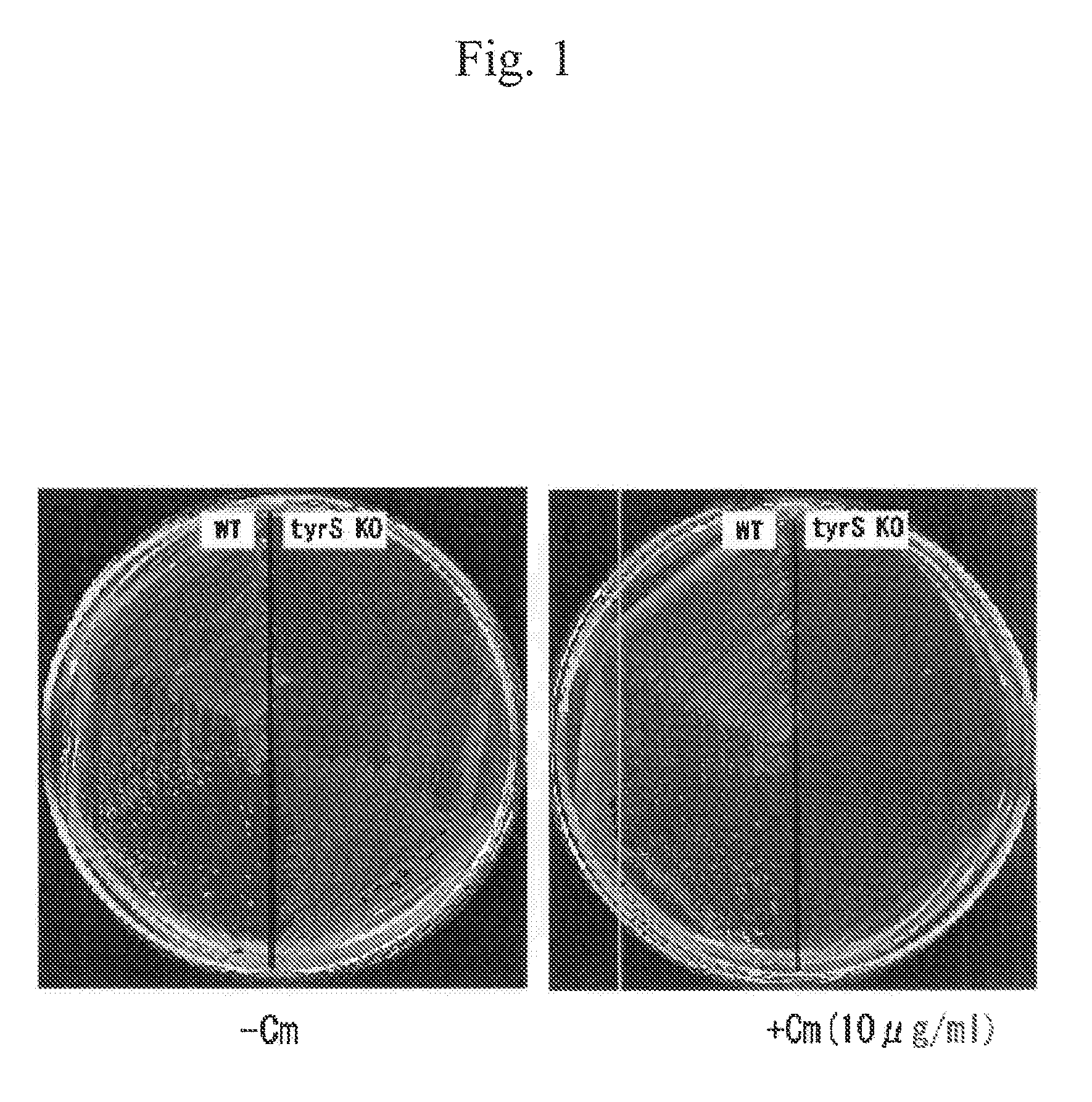Method for production of protein having non-natural type amino acid integrated therein
a technology of amino acid and protein, which is applied in the direction of ligases, microorganisms, and genetically modified cells, can solve the problems of difficult unambiguous translation of a gene into a protein, and disadvantageous synthesizing a plurality of types, and achieves enhanced specificity to non-natural amino acids
- Summary
- Abstract
- Description
- Claims
- Application Information
AI Technical Summary
Benefits of technology
Problems solved by technology
Method used
Image
Examples
example 1
[0079]In this example, a method for producing, alloproteins wherein E. coli-derived aaRS* (i.e., mutant TyrRS having enhanced specificity to 3-iodo-L-tyrosine compared with specificity to tyrosine) was used, and E. coli host cells were used was examined.
[0080]At the outset, mutant TyrRS genes and suppressor tRNATyr genes were prepared in the following manner.
Mutant TyrRS
[0081]E. coli TyrRS genes were isolated from E. coli chromosomes and then subjected to cloning. The cloned genes were then subjected to amino acid substitution, i.e., from tyrosine to valine (position 37) and from asparagine to cysteine (position 195), so as to prepare mutant TyrRS genes having enhanced specificity to 3-iodo-L-tyrosine compared with specificity to tyrosine. Preparation of E. coli chromosomes, isolation of genes of interest from the chromosomes via a gene amplification technique (i.e., PCR), and cloning of the isolated genes into adequate vectors can be easily performed via known gene engineering tech...
PUM
| Property | Measurement | Unit |
|---|---|---|
| chemical behavior | aaaaa | aaaaa |
| electrophoresis | aaaaa | aaaaa |
| structures | aaaaa | aaaaa |
Abstract
Description
Claims
Application Information
 Login to View More
Login to View More - R&D
- Intellectual Property
- Life Sciences
- Materials
- Tech Scout
- Unparalleled Data Quality
- Higher Quality Content
- 60% Fewer Hallucinations
Browse by: Latest US Patents, China's latest patents, Technical Efficacy Thesaurus, Application Domain, Technology Topic, Popular Technical Reports.
© 2025 PatSnap. All rights reserved.Legal|Privacy policy|Modern Slavery Act Transparency Statement|Sitemap|About US| Contact US: help@patsnap.com



